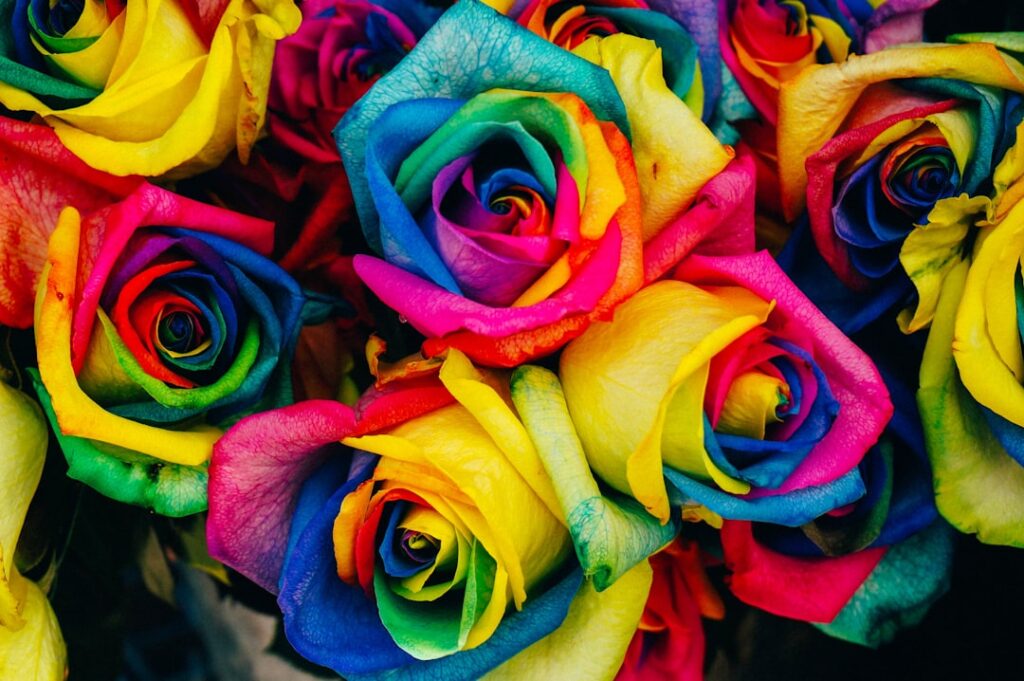Gumdrops have a long and fascinating history that dates back to ancient times. The earliest known form of gumdrops can be traced back to the ancient Middle East, where people would mix honey and fruit juices with various spices to create a sweet and chewy treat. These early gumdrops were often used for medicinal purposes, as the combination of honey and fruit juices was believed to have healing properties.
As time went on, the popularity of gumdrops spread to other parts of the world, including Europe and Asia. In the 19th century, gelatin-based gumdrops became popular in the United States, and they were often sold in small, colorful boxes. These early gumdrops were made using a combination of gelatin, sugar, and flavorings, and they were often shaped into small, bite-sized pieces.
In the modern era, gumdrops have become a beloved treat enjoyed by people of all ages. They are now available in a wide variety of flavors and colors, and they are often used in baking and confectionery. Gumdrops have truly come a long way from their humble beginnings in the ancient Middle East, and they continue to bring joy to people all over the world.
Key Takeaways
- Gumdrops have a long history, dating back to ancient times, and have evolved into the modern sweet treats we know today.
- The making of gumdrops involves a colorful and sweet process, with ingredients like gelatin, sugar, and flavorings creating the iconic chewy texture and vibrant colors.
- Gumdrops come in a variety of flavors and shapes, offering a wide range of delicious options for candy lovers to enjoy.
- Gumdrops have made their mark in popular culture, from being featured in fairy tales and movies to being a staple treat at candy houses and movie theaters.
- Gumdrops can be used as a decorative element in baked goods, adding both color and flavor to cakes, cookies, and other confections.
The Ingredients and Making of Gumdrops: A Sweet and Colorful Process
The process of making gumdrops is a sweet and colorful one that involves a few key ingredients. The main ingredients used in gumdrops include gelatin, sugar, and flavorings. Gelatin is used to give gumdrops their chewy texture, while sugar provides the sweetness that makes them so delicious. Flavorings such as fruit juices or extracts are added to give gumdrops their unique taste.
To make gumdrops, the gelatin is first softened in water and then heated until it dissolves. Sugar is then added to the mixture and heated until it reaches the desired temperature. Once the sugar has dissolved, the flavorings are added, and the mixture is poured into molds to set. After the gumdrops have set, they are removed from the molds and coated in sugar to prevent them from sticking together.
The process of making gumdrops is a labor of love that requires precision and attention to detail. Each batch of gumdrops is carefully crafted to ensure that they have the perfect texture and flavor. Whether they are made in a small candy shop or a large confectionery factory, gumdrops are always made with care and dedication.
The Variety of Flavors and Shapes: Exploring the Delicious Options
One of the most delightful aspects of gumdrops is the wide variety of flavors and shapes that they come in. From classic fruit flavors like cherry, orange, and lemon to more exotic options like mango, passionfruit, and pomegranate, there is a gumdrop flavor to suit every taste. In addition to traditional fruit flavors, gumdrops also come in a range of other flavors such as cola, root beer, and even chocolate.
In terms of shapes, gumdrops can be found in a multitude of forms, from classic round drops to fun and whimsical shapes like bears, hearts, and stars. Some gumdrops are even shaped like animals or cartoon characters, making them especially appealing to children. The variety of flavors and shapes available ensures that there is always something new and exciting to try when it comes to gumdrops.
Whether you prefer classic fruit flavors or more adventurous options, there is no shortage of delicious gumdrop varieties to explore. With so many different flavors and shapes to choose from, it’s easy to see why gumdrops are such a beloved treat for people of all ages.
Gumdrops in Popular Culture: From Candy Houses to Movie Theaters
| Popular Culture Reference | Description |
|---|---|
| Fairy Tales | Gumdrops are often used as decorations on candy houses in fairy tales like Hansel and Gretel. |
| Movie Theaters | Gumdrops are a popular candy sold at movie theaters as a sweet snack option. |
| Art and Literature | Gumdrops have been featured in various art and literature pieces as colorful and tasty treats. |
Gumdrops have made their mark on popular culture in a variety of ways, from their association with fairy tales to their presence in movie theaters and candy shops. Perhaps one of the most iconic uses of gumdrops in popular culture is their appearance in the story of Hansel and Gretel, where they are used to decorate the witch’s gingerbread house. This association with fairy tales has helped cement gumdrops as a whimsical and magical treat in the minds of many people.
In addition to their presence in fairy tales, gumdrops have also become a staple in movie theaters and candy shops around the world. They are often sold in colorful boxes or bags, making them an eye-catching treat that appeals to both children and adults. Gumdrops are also a popular choice for decorating gingerbread houses during the holiday season, adding a festive touch to these edible works of art.
Whether they are being used to create magical gingerbread houses or being enjoyed as a sweet snack at the movies, gumdrops have become an enduring symbol of fun and indulgence in popular culture.
Gumdrops as a Decorative Element: Adding Color and Flavor to Baked Goods
Gumdrops are not only delicious on their own but also make for a delightful decorative element in baked goods. Their vibrant colors and sweet flavors make them a popular choice for adding visual appeal to cakes, cookies, and other confections. Gumdrops can be used to create intricate designs or patterns on baked goods, adding a playful and whimsical touch to any dessert.
One popular way to use gumdrops as a decorative element is to slice them into thin rounds or strips and use them to create colorful flower petals or leaves on cakes and cupcakes. Gumdrops can also be chopped into small pieces and mixed into cookie dough or cake batter to add bursts of color and flavor throughout the baked goods. Their versatility makes them a fun and creative addition to any baker’s toolkit.
Whether they are being used to create elaborate designs or simply adding a pop of color to a dessert, gumdrops are a versatile and charming decorative element that can elevate any baked good from ordinary to extraordinary.
Gumdrops as a Sweet Gift: Creative Ways to Share the Joy

Gumdrops make for a delightful and thoughtful gift that can be shared with friends and loved ones in creative ways. One popular way to give gumdrops as a gift is to package them in decorative jars or boxes tied with colorful ribbons. This not only adds a festive touch but also allows the recipient to enjoy the visual appeal of the gumdrops before indulging in their sweet flavor.
Another creative way to share the joy of gumdrops is by incorporating them into homemade gift baskets or care packages. By pairing them with other sweet treats or small gifts, gumdrops can be part of a thoughtful and personalized gift that is sure to bring a smile to anyone’s face. Additionally, gumdrops can be used as part of themed gift baskets for special occasions such as birthdays or holidays.
Whether given on their own or as part of a larger gift, gumdrops are a sweet and charming way to show someone you care. Their colorful appearance and delicious taste make them a delightful treat that is sure to be appreciated by anyone who receives them.
The Health Benefits of Gumdrops: Moderation and Enjoyment
While it’s no secret that gumdrops are a sugary treat, they can still be enjoyed in moderation as part of a balanced diet. Gumdrops are typically low in fat and contain no cholesterol, making them a relatively guilt-free indulgence when enjoyed in moderation. Additionally, some gumdrops are made with natural fruit juices or extracts, providing a small amount of essential vitamins and minerals.
It’s important to remember that moderation is key when it comes to enjoying gumdrops or any other sugary treat. By savoring them slowly and mindfully, it’s possible to fully enjoy the sweet flavor without overindulging. Additionally, pairing gumdrops with healthier snacks such as nuts or fresh fruit can help balance out their sweetness while still satisfying a craving for something sweet.
Ultimately, while gumdrops may not be considered a health food, they can still be enjoyed as part of a balanced diet when consumed in moderation. By savoring them as an occasional treat rather than an everyday indulgence, it’s possible to enjoy the sweet joy of gumdrops without compromising overall health and well-being.
Sure, here’s a paragraph that mentions a related article to gumdrops and includes a link to the related article:
If you’re a fan of sweet treats like gumdrops, you’ll love learning about the latest trends in candy and confections. Check out this fascinating article on Popicat that explores the history and evolution of popular candies, including gumdrops. Discover how these beloved treats have changed over time and continue to delight candy lovers around the world. Learn more about the evolution of candies here!
FAQs
What are gumdrops?
Gumdrops are a type of candy that are typically small, brightly colored, and fruit-flavored. They are often coated in sugar and have a chewy, gelatin-like texture.
How are gumdrops made?
Gumdrops are made by mixing gelatin, sugar, and flavorings together to create a thick, sticky mixture. This mixture is then poured into molds and allowed to set before being cut into small, bite-sized pieces.
What flavors do gumdrops come in?
Gumdrops come in a variety of fruit flavors, including cherry, lemon, lime, orange, and grape. Some manufacturers also produce specialty flavors such as watermelon, blue raspberry, and apple.
Are gumdrops gluten-free?
Most gumdrops are gluten-free, but it’s always best to check the ingredients list to be sure. Some manufacturers may use gluten-containing ingredients or process their gumdrops in facilities that also handle gluten.
How should gumdrops be stored?
Gumdrops should be stored in a cool, dry place away from direct sunlight. They can be kept at room temperature for a few weeks, but for longer storage, it’s best to keep them in an airtight container in the refrigerator.
Can gumdrops be used for baking?
Yes, gumdrops can be chopped up and used as a colorful and flavorful addition to baked goods such as cookies, cakes, and muffins. They add a fun and festive touch to any recipe.








